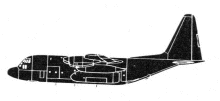Incident Overview

Description
The pilot reported that on joining the circuit at Rungwa airstrip, he flew down the runway at 500 ft agl to make a runway inspection. He said that his visual impression was that the runway was relatively short at around 700 m and appeared to have downward slopes at each end. He decided to approach from the eastern end of the runway as this seemed to have the best advantage of an uphill slope. The wind appeared light based on ground speed indication from the aircraft’s GPS. There was no windsock on the runway and no smoke to indicate the actual wind direction. He touched down about 100 m beyond the beginning of the runway on the upward slope. On reaching the level middle section of the runway, the aircraft appeared to be slowing down significantly. However, on the last 200 m or so, there was a sharp downward slope, which caused the aircraft to gain speed, according to the pilot. On applying full braking and propeller reverse, it became clear 50 m from the end of the runway that the aircraft would not stop in time. He subsequently tried to ground loop the aircraft to the right but was unable to get significant pressure from the right brake to effect this. The aircraft went through a line of heaped soil and then hit a shallow ditch on the other side of this soil, coming to rest some 10 m beyond the end of the runway. There was no fire and all the occupants were uninjured. Examination of the aircraft showed that some bolts on the nose landing gear had separated and the shock strut had collapsed.
Primary Cause
Insufficient braking and propeller reverse during the last 200 meters, leading to a potential loss of control and impact with the soil.Insufficient braking and propeller reverse during the last 200 meters, leading to a potential loss of control and impact with the soil.Share on:





